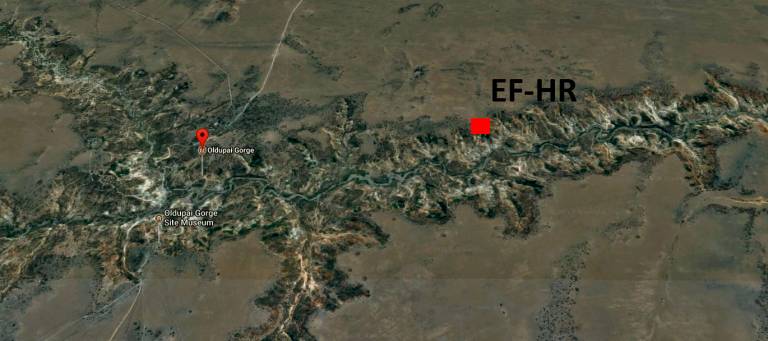A 1.5 million year old archaeological site at the Olduvai Gorge featured extensive river action
18 August 2017
This paper investigates the formation history of the early Acheulean site of EF-HR (Olduvai Gorge, Tanzania).
 The study focuses on the main site (T2-Main Trench) and adjacent trenches (T12 and T9), which constitute the bulk of the archaeological assemblage recently excavated in the EF-HR area (de la Torre et al., submitted). Site formation processes are investigated through taphonomic proxies and spatial analysis, and consider artifact features, orientation patterns, and topographic data retrieved during archaeological excavation. This enables an assessment of the impact of natural agents on the assemblage and a discussion of the relevance of water disturbance in shaping the structure of the EF-HR archaeological record. The results indicate that fluvial action over the assemblage was significant, although it is likely that EF-HR still preserves areas marginally affected by water sorting and rearrangement. In summary, by applying a novel approach that combines a systematic analysis of artifact attributes with GIS spatial analysis of archaeological remains and topographic features, our study aims to provide a fresh look at the interaction of human and natural agents in the formation of Early Stone Age assemblages at Olduvai Gorge.
The study focuses on the main site (T2-Main Trench) and adjacent trenches (T12 and T9), which constitute the bulk of the archaeological assemblage recently excavated in the EF-HR area (de la Torre et al., submitted). Site formation processes are investigated through taphonomic proxies and spatial analysis, and consider artifact features, orientation patterns, and topographic data retrieved during archaeological excavation. This enables an assessment of the impact of natural agents on the assemblage and a discussion of the relevance of water disturbance in shaping the structure of the EF-HR archaeological record. The results indicate that fluvial action over the assemblage was significant, although it is likely that EF-HR still preserves areas marginally affected by water sorting and rearrangement. In summary, by applying a novel approach that combines a systematic analysis of artifact attributes with GIS spatial analysis of archaeological remains and topographic features, our study aims to provide a fresh look at the interaction of human and natural agents in the formation of Early Stone Age assemblages at Olduvai Gorge.
The research was conducted by Ignacio de la Torre and Karol Wehr of the Institute of Archaeology, University college London.
Site formation processes of the early Acheulean assemblage at EF-HR (Olduvai Gorge, Tanzania)
Ignacio de la Torre, Karol Wehr
DOI: 10.1016/j.jhevol.2017.07.002
 Close
Close

